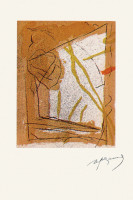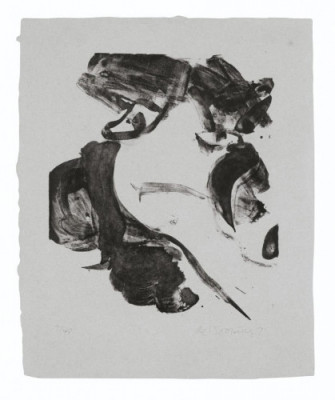
Details
Artist
Styles
// Albert Ràfols-Casamada's Signe i color - 2 (1991) is a limited edition etching and aquatint that embodies his exploration of gesture and abstraction. Rendered in monochromatic tones, the composition features bold, free-flowing black lines that create a framework of intersecting shapes against a muted grey background. The lines evoke a sense of spontaneity and movement, yet maintain a structured balance, reflecting Ràfols-Casamada’s ability to blend order with expressiveness. The artwork’s title, meaning Sign and Color, hints at a symbolic language, where each line seems to carry its own weight and significance, inviting viewers to interpret its abstract forms through their own lens.
Signe i color - 2 , 1991
form
Medium
Size
76 x 56 cm
- Inches
- Centimeters
Edition
Price
- USD
- EUR
- GBP
Details
Artist
Styles
// Albert Ràfols-Casamada's Signe i color - 2 (1991) is a limited edition etching and aquatint that embodies his exploration of gesture and abstraction. Rendered in monochromatic tones, the composition features bold, free-flowing black lines that create a framework of intersecting shapes against a muted grey background. The lines evoke a sense of spontaneity and movement, yet maintain a structured balance, reflecting Ràfols-Casamada’s ability to blend order with expressiveness. The artwork’s title, meaning Sign and Color, hints at a symbolic language, where each line seems to carry its own weight and significance, inviting viewers to interpret its abstract forms through their own lens.
- Recently Added
- Price (low-high )
- Price (high-low )
- Year (low-high )
- Year (high-low )
Albert Ràfols-Casamada
Portfolio 12th Anniversary Of Galeria Joan Prats , 1988
Limited Edition Print
Lithograph
EUR 500
What is Gestural?
Gestural art is a term that describes painting with freely sweeping brushstrokes. The primary goal of gestural art is to allow the artist to physically express emotional impulses. The varied, yet expressive paint marks are intended to convey the artist's inner thoughts and emotions, which viewers are believed to understand through the dynamic and spontaneous application of paint.





























































